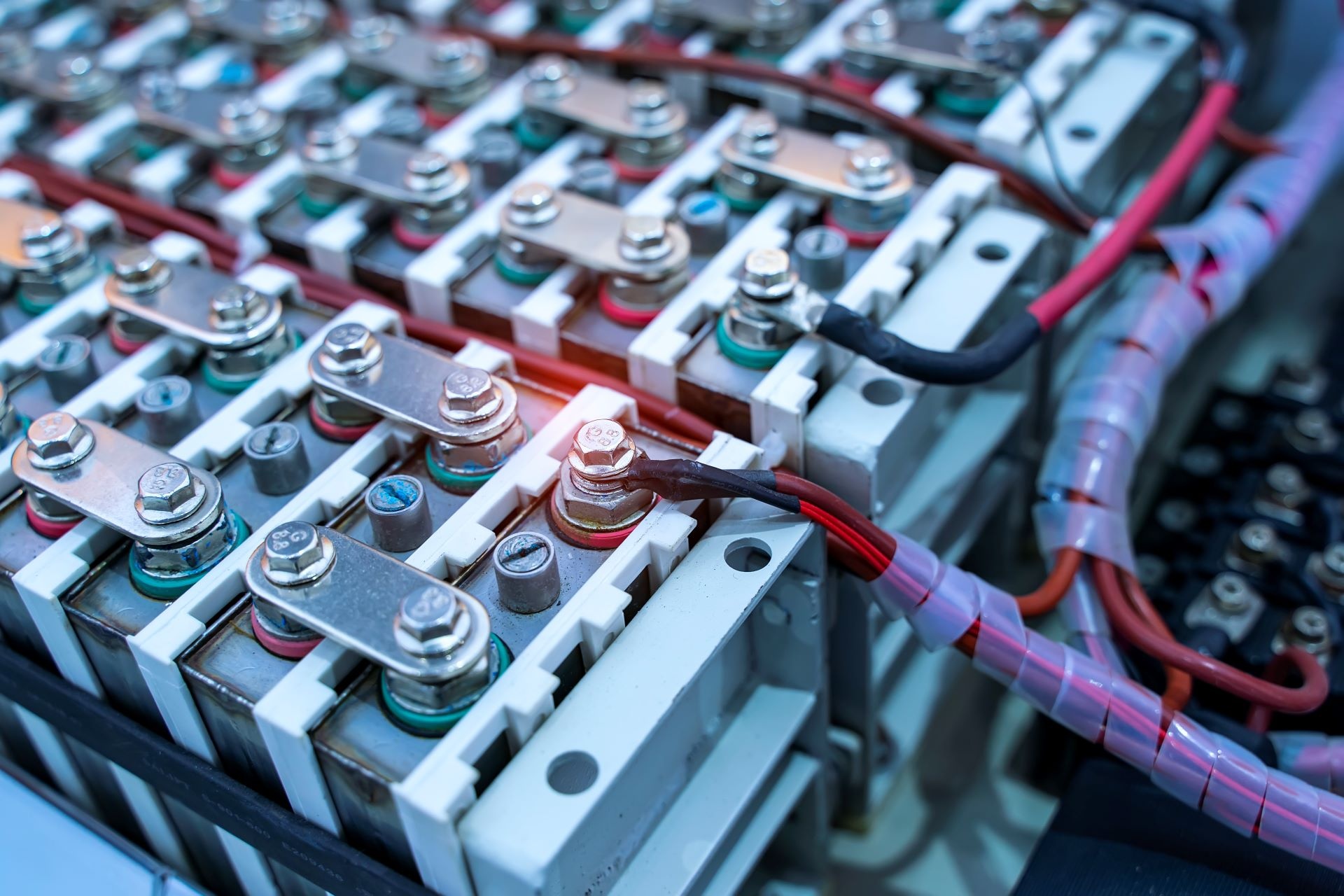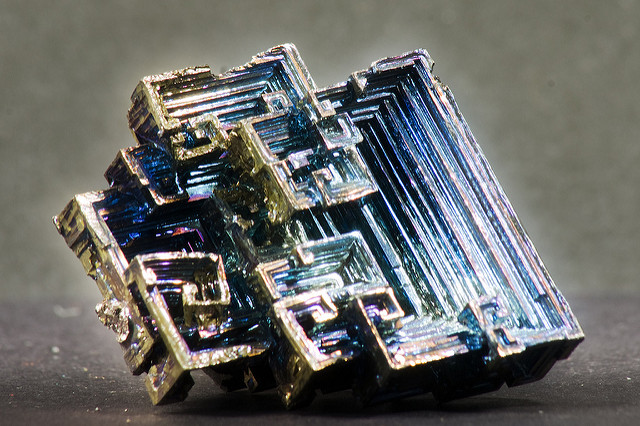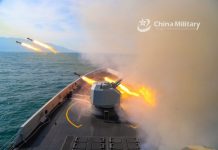The tech war between China and the US just got heated as Beijing fired a warning salvo at the major world economies by restricting the export of critical minerals Germanium and Gallium, useful in mobile phones, electric vehicles, nuclear energy, and other devices, including weapons.
Russian Su-35 Fighters ‘Attack’ US MQ-9 Reaper Drones In Syria; US Releases Footage Of ‘Flare & Afterburner’ Assault
The supply chain disruption of these two critical raw materials has already made the world economies scramble to amass as much of these minerals as possible before the restrictions kick in.
For a world frightened by China’s rise and its dominance of many industries critical for global infrastructure and security, it has done little to build manufacturing capability and resilient supply chains.
The US government identified four fields in 2021: Semiconductor manufacturing and advanced packaging, large capacity batteries, critical minerals and materials, and pharmaceuticals and active pharmaceutical ingredients (APIs).
The two minerals weaponized by China are important for semiconductors that are essential for national security. They enable the development and fielding of advanced weapons systems and control the operation of critical infrastructure.
They are fundamental to the operation of virtually every military system, including communications and navigation systems and complex weapons systems such as those deployed in the F-35 Joint Strike Fighter.
They are key to future technologies like artificial intelligence and 5G. In addition, developing advanced autonomous systems, cybersecurity, space and hypersonic, and directed energy is also dependent on semiconductor technologies.
The US and other European countries can’t find alternative supply chains at such short notice. Specific industries, national security, and critical infrastructure will feel the impact.
According to the Critical Raw Minerals Alliance, China produces 60 percent of the world’s germanium and 80 percent of the world’s gallium.
Applications of germanium include fiber-optic systems, infrared optics, solar cells, and light-emitting diodes (LEDs), while those of gallium are said to include microwave and high-speed switching circuits. Gallium arsenide – the second most common semiconductor in use today – is only produced at the requisite quality by a few companies worldwide, just one of which is in Europe.
The US had seen it coming. On February 24, 2021, President Biden signed Executive Order 14017, “America’s Supply Chains,” where he directed the US government to undertake a comprehensive review of critical US supply chains to identify risks, address vulnerabilities, and develop a strategy to promote resilience.
When the President signed the order, he invoked an old proverb: “For want of a nail, the shoe was lost. For want of a shoe, the horse was lost.” And on and on, until the kingdom was lost. Small failures at even one point in supply chains can impact America’s security, jobs, families, and communities.
The following report brought out concerning figures about the monopoly of China not only for these two minerals but also its dominance of the supply chains for rare earth minerals used in high-tech products, as well as lithium, cobalt, and graphite used in batteries.

China’s Unrivaled Dominance
The US national security experts have repeatedly raised concerns about the dependence of the defense industry on limited domestic suppliers. They have pointed out the lack of an ecosystem for promoting innovation, skills, and production facilities for innovations essential to military preparedness—like highly specialized lithium-ion batteries.
Semiconductor Manufacturing & Advanced Packaging
Semiconductors are an essential component of electronic devices. The packaging, which may contain one or more semiconductors, provides an alternative avenue for innovation in the density and size of products. Semiconductors have become ubiquitous today and run various electronics ranging from refrigerators to fighter jets.
A new car, for example, may require more than 100 semiconductors for touch screens, engine controls, driver assistance cameras, and other systems. The US share of global semiconductor production has dropped from 37 percent in 1990 to 12 percent today and is projected to decline further without a comprehensive US strategy to support the industry.
This report was the precursor to the August 2022 US Congress’ CHIPS and Science Act that approved subsidies and tax breaks to help jump-start the renewed production on American soil of advanced semiconductors.
Just two months later, the Joe Biden administration issued wide-ranging restrictions on the export to China of chips and chip-making technology to undercut the country’s ability to manufacture the same class of integrated circuits. And then ensued the semiconductor wars between the US and China.
The US has also been pressurizing its allies to follow its lead. On June 30, 2023, the Netherlands, under pressure from the White House, said it would restrict the sales of some chip-making kits to China: ASML, a Dutch maker of the world’s most advanced lithography machines, will, from now on, sell Chinese customers only low-yield devices for etching cutting-edge chips.
The Chinese government has just been retaliating by small measures like barring Chinese companies from using memory chips from Micron, a US company. But, on July 3, the Chinese government went all out in countering the US and its allies by imposing export controls on gallium and germanium, two metals used in high-end semiconductors.
However, the move is not considered “a death blow” to the United States and its allies. The US imports a fifth of its gallium from the United Kingdom and Germany and buys more than 30 percent of its germanium from Belgium and Germany.
Large Capacity Lithium-Ion Batteries
Lithium is the key to the global transition to low-carbon energy. From rechargeable batteries to Electric Vehicles, Lithium is an important component. The pandemic also “turbocharged” the lithium-ion-battery-to-electric vehicle (EV) supply chain and sparked the battery ‘arms race’ between China, the United States, and Europe.
These three countries process over 80 percent of the most critical minerals used in Lithium batteries, and China holds 50 percent of the total market share of lithium.

Lithium is also termed a 21st-century oil. This mineral is not scarce but is found in large amounts in nature in low concentrations. The element is a key component in rechargeable batteries that power almost all electronic gadgets, from smartphones to laptops.
The global demand for lithium and graphite, two of the most important materials for electric vehicle batteries, is estimated to grow by more than 4000 percent by 2040 in a scenario where the world achieves its climate goals, with graphite projected to grow nearly 2500 percent.
As the US and other major countries transition from fossil fuels for power generation and electrifying automotive and trucking fleets, large-capacity batteries for electric vehicles (EVs) and grid storage will be essential for economic and national security.
According to the White House estimates, global demand for EV batteries is projected to grow from approximately 747-gigawatt hours (GWh) in 2020 to 2,492-gigawatt hours by 2025. With absent policy intervention, US production capacity is expected to increase to only 224 GWh during that period, but US annual demand for passenger EVs will exceed that capacity.
China, a major player in the geopolitics of lithium, has been strategically building its capability to mine the mineral across the globe, manufacture EVs, and set up individual ‘battery megafactories.’ The country presently governs the setting of prices for this crucial mineral.
According to Simon Moore, the Managing Director of Benchmark Mineral Intelligence, the number of individual battery megafactories, also called gigafactories, in the pipeline for the next decade increased from 118 in 2019 to 181 in 2020. (For context, only four were planned in 2015).
Of the 181, 136 are based in China, 10 in the US, and 16 in continental Europe. Of the 181 battery mega factories in various planning and construction stages, 88 are currently active, making cells for EVs.
Moore explained to the US Senate Committee for Energy and Natural Resources in 2020: “China is building one battery gigafactory a week; the US one every four months.” China produces 75 percent of all lithium-ion batteries used in EVs.
Critical Minerals And Materials
The United States and other nations depend on a range of critical minerals and materials that are the building blocks of their daily products. Rare earth metals, or “rare earth,” is a collection of 17 elements valued for their conductive and magnetic properties. They are essential to manufacturing everything from engines to airplanes to defense equipment.

Demand for many of these metals is projected to surge over the next two decades, particularly as the world moves to eliminate net carbon emissions by 2050. China was estimated to control 55 percent of global rare earth mining capacity in 2020 and 85 percent of rare earth refining.
The US Geological Survey says China produces just over two-thirds of all rare earth metals, but it has double the reserves of its next closest nation. Processing rare earth is toxic because of this. Some countries delay or limit their entry into the market. China, however, has not allowed itself to be held back.
Pharmaceuticals & Active Pharmaceutical Ingredients (APIs)
As the pandemic spread through the world, China accounted for the bulk of exports of certain pharmaceutical raw materials. The country is indispensable in the supply chain for antibiotics and vitamins.
The COVID-19 pandemic highlighted the critical importance of a resilient US public health industrial base. During the pandemic, the US dramatically increased its capacity for vaccine production within a year. But shortages of critical generic drugs and APIs have plagued the country for years.
API is the component that produces the desired effects. Although a drug has many components, API is a primary part of the drug. According to a report by Data Bridge Market Research, the active pharmaceutical ingredient (API) market was valued at US$300,722.26 billion in 2021 and is expected to reach a value of US$540335.81 billion by 2029 at a compound annual growth rate of 7.6 percent during the forecast period of 2022 to 2029.
The overseas location of 87 percent of generic API has helped the US to reduce healthcare costs by trillions of dollars in the past decade, but it has left the US healthcare system vulnerable to shortages of essential medicines.
- Ritu Sharma has written on defense and foreign affairs for over a decade. She holds a Master’s Degree in Conflict Studies and Management of Peace from the University of Erfurt, Germany. Her areas of interest include Asia-Pacific, the South China Sea, and Aviation history.
- She can be reached at ritu.sharma (at) mail.com




